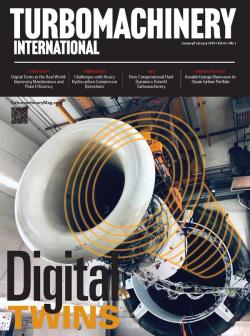
OR WAIT null SECS
© 2024 MJH Life Sciences™ and Turbomachinery Magazine. All rights reserved.
FUTURE PUMPS
ADDRESSING THE CHALLENGES OF SUBMERGED MOTOR PUMPS
by Amin Almasi
Old fashioned pumps using external electric motors, mechanical seals and conventional lubrication oil have presented many problems to modern facilities. They introduced reliability, safety and operational issues. That is why they are usually employed in a one operating and one standby configuration (known as 1+1). Fortunately, advanced designs now exist as alternatives to conventional pumps.
Conventional centrifugal pumps couple a pump casing to an external electric motor. They need a shaft seal to allow the shaft to extend outside of the pump casing. They also need a coupling and a relatively long shaft connected to an electric motor. However, the seals are susceptible to failure. Unscheduled shutdowns and serious safety issues have resulted due to factors such as the need for piping to an external pump, failed pump seals and leakage of the pumped liquid.
A submerged motor pump can avoid most of these problems. The pump and electric motor are mounted on a common shaft and submerged in the pumped liquid. At first glance, it may seem unwise to submerge the electric motor in hydrocarbons or flammable liquids. However, this is safe and reliable.
For many services and for pumped liquids, the best approach is to submerge the pump and motor. The pump train is isolated from oxygen. Motor gaps and voids are filled with liquid. Seals or couplings are eliminated.
Concerns about heat dissipation or electric motor temperature rise are best considered on a case by case basis. For relatively hot liquids (10°C to 40°C), special designs are needed. Submerged motor designs, though, are not suitable for very hot liquids. But they are reliable in low temperature and cryogenic services.
Each submerged motor pump system has unique characteristics. This depends on the processes being applied, the size and location of the pump, the source and details of the pumped liquid.
Submerged motor pumps are usually mated with variable speed drives. VSDs enhance flexibility and optimize pump performance by varying pump speed. As VSD regulates the rotating speed, greater variation in discharge pressure can be achieved for a given pumping capacity.
In addition, a VFD allows a compact variable speed pump to be started at a reduced frequency. This soft start decreases the starting current level and lowers the required current. This is important for motors larger than 0.7 MW.
In-tank submerged pumps
In-tank submerged pumps eliminate conventional side nozzles on tanks, external pumps, suction-feed lines from tanks to pumps, and all associated risks. These in-tank designs typically draw the tank liquid down to extremely low levels. Pump manufacturers and operators are happy to reduce any undesirable remnant liquid in the tank.
Many in-tank submerged pumps are removable. When it is lifted from above, the suction valve closes and it is sealed. This allows purging. The pump can be safely removed for inspection and maintenance. Tanks can be located below ground level, if desired.
Further configurations of submerged motor pumps are available. A vessel-mounted submerged pump, for example, is offers high head pumping services with flow ratings as high as 5000 m3/h. Discharge pressures can be as high as 250 Barg or more. These pumps are contained in a pressure vessel built to the appropriate vessel codes. As these pumps often operate 24/7 for prolonged periods, reliability is essential. By closing the suction, and discharge valves and applying an inert gas purge to the suction vessel, the suction vessel mounted pump can be removed for maintenance.
Conventional materials used in traditional pumps might not be suitable for submerged pumps. Special materials and designs may be required. For some submerged pumps, aluminium alloys are needed for housings and rotating components. They can be cast in the complex geometries required. They are particularly important for specific applications. In some cases, the alloy’s yield strength increases as the temperature decreases without becoming brittle. They are commonly used for low temperature and cryogenic services. They are also corrosion resistant. Their thermal expansion properties maintain an exact fit and clearances over a wide temperatures range.
Hybrid ceramic rolling-element bearings, for example, are needed for these pumps. Many of these new materials have not been used before for pumps applications. That’s why they are not listed or referred to in pump codes such as API Standard 610.



